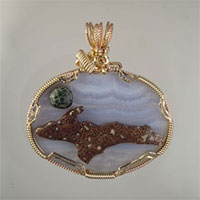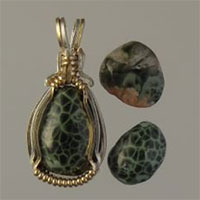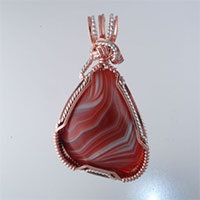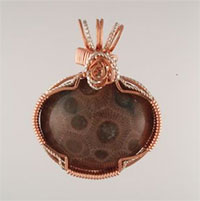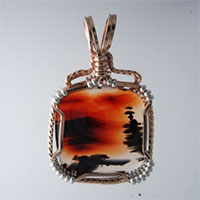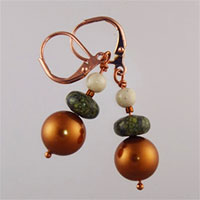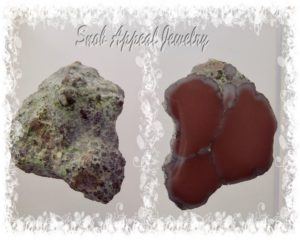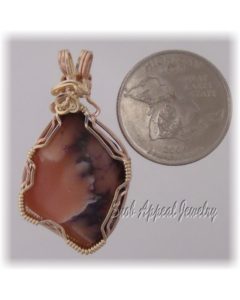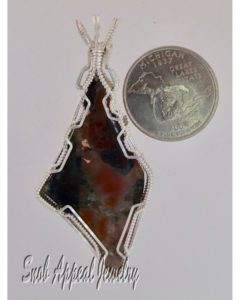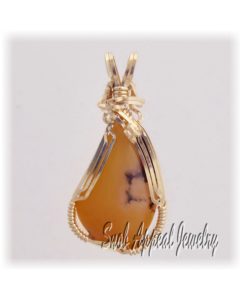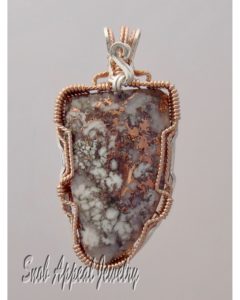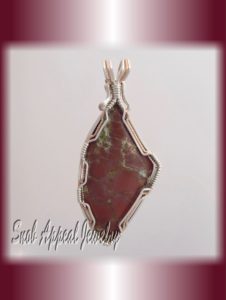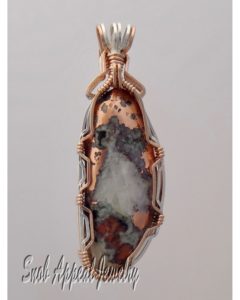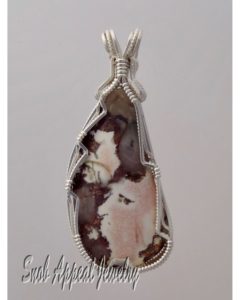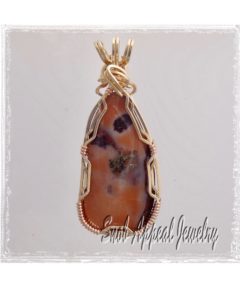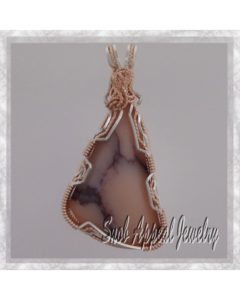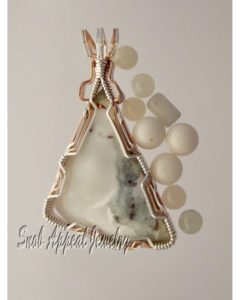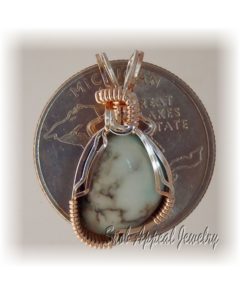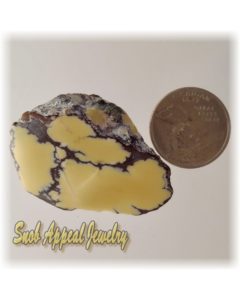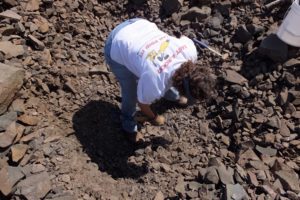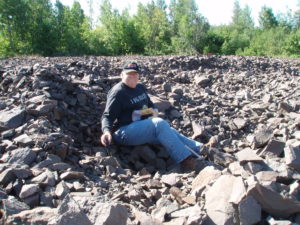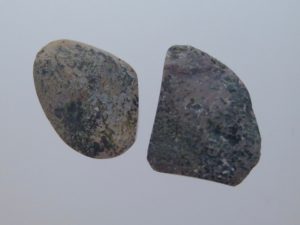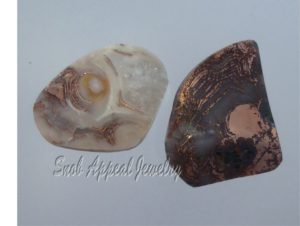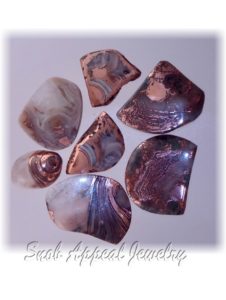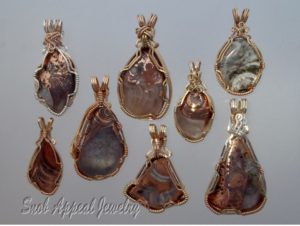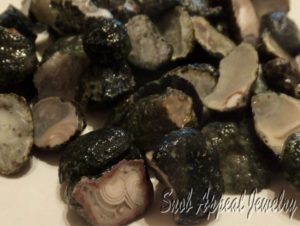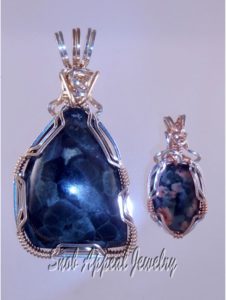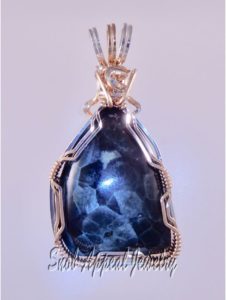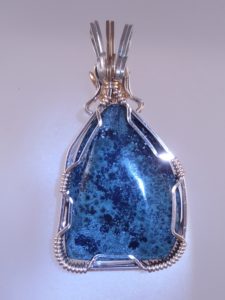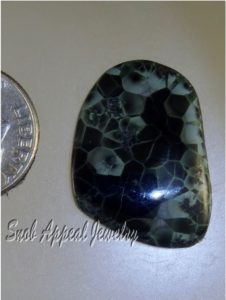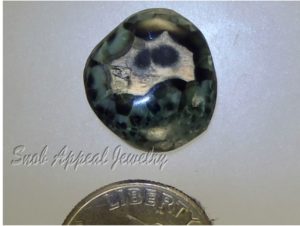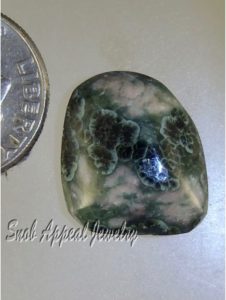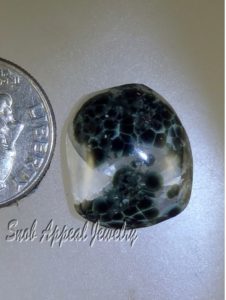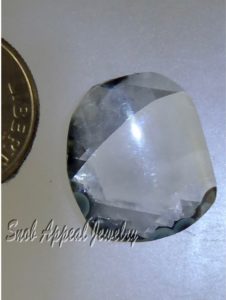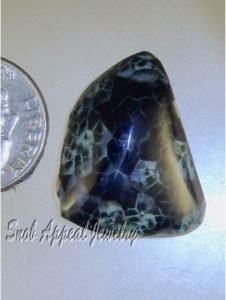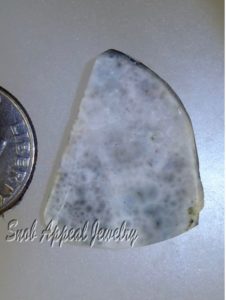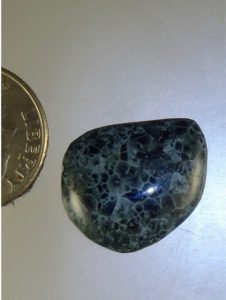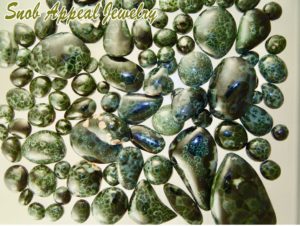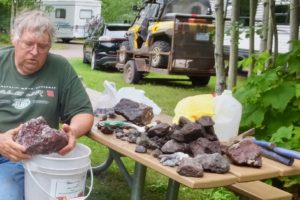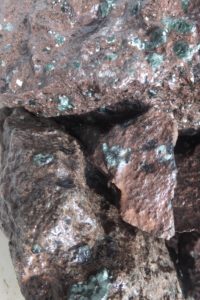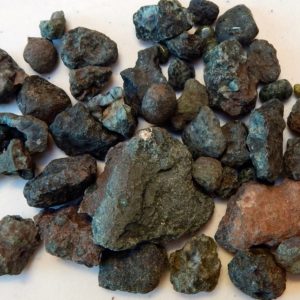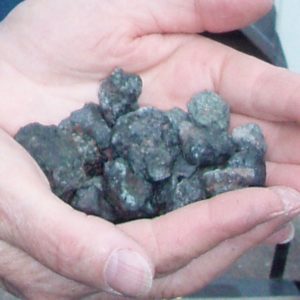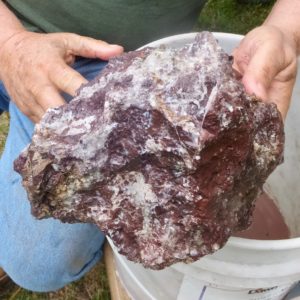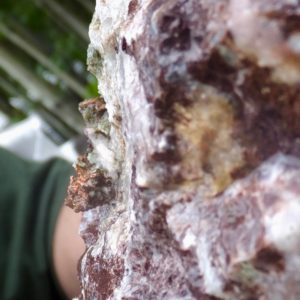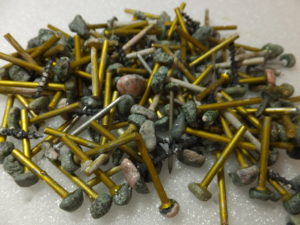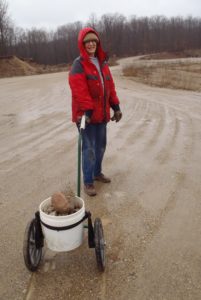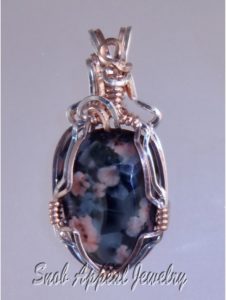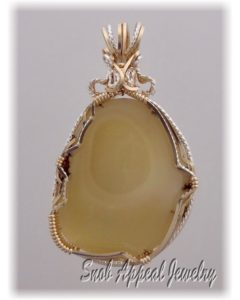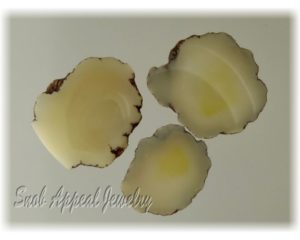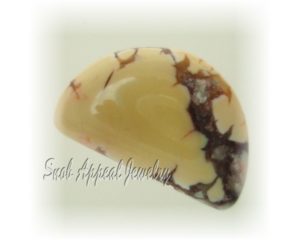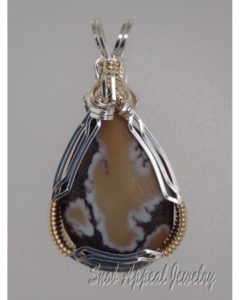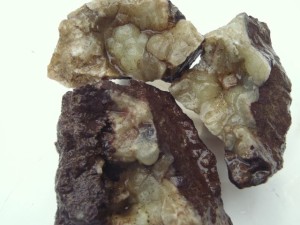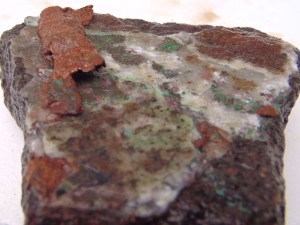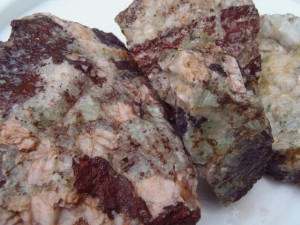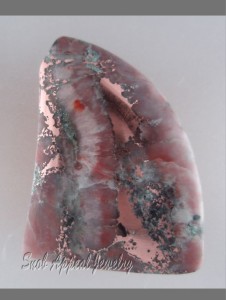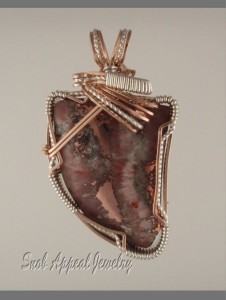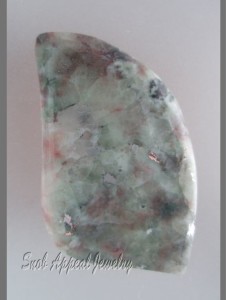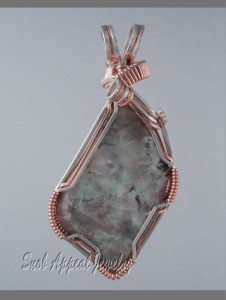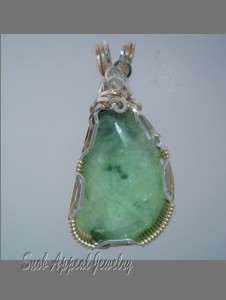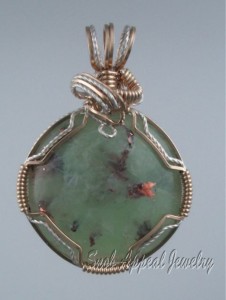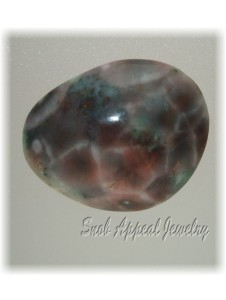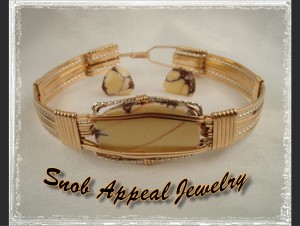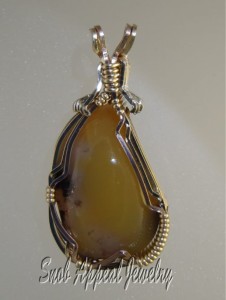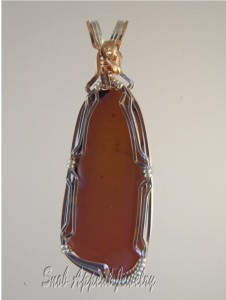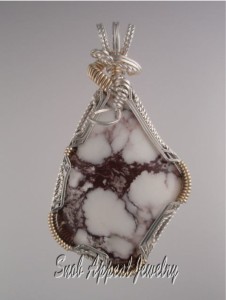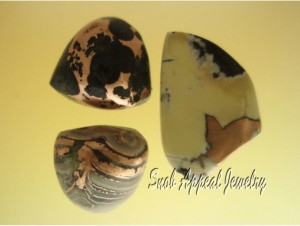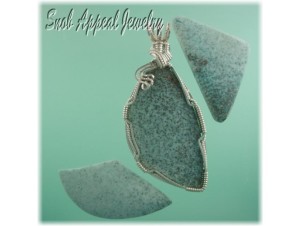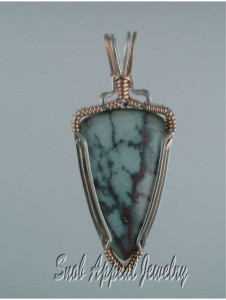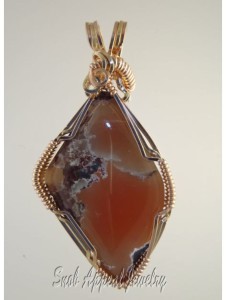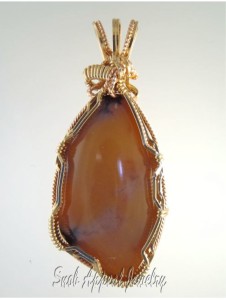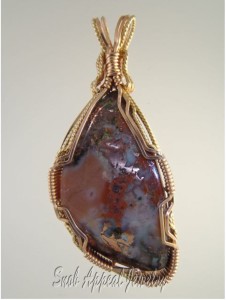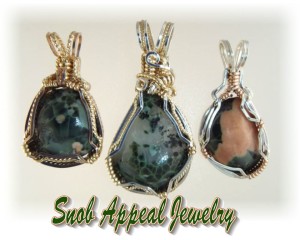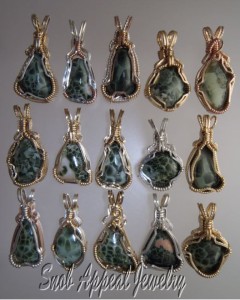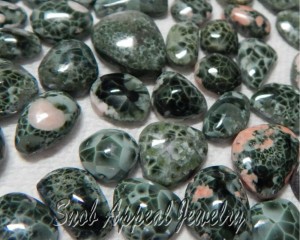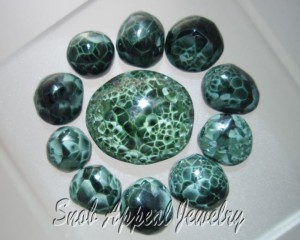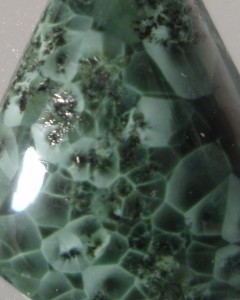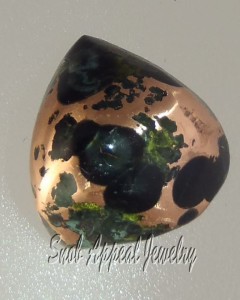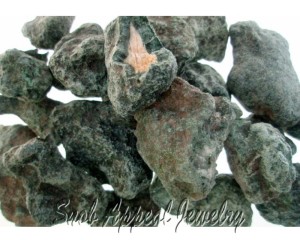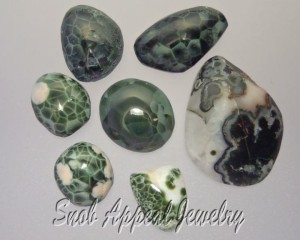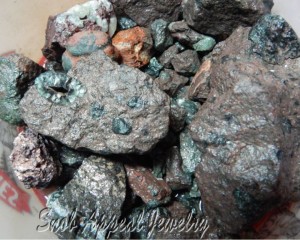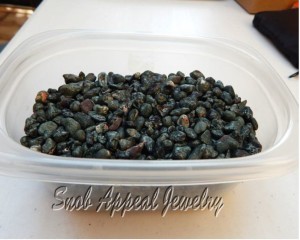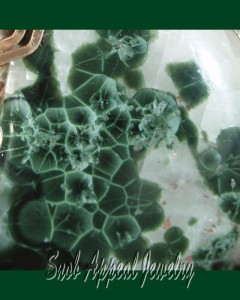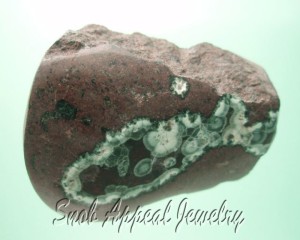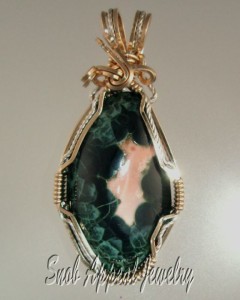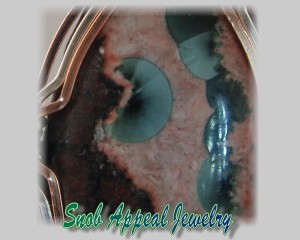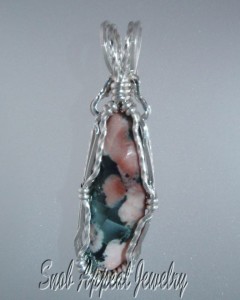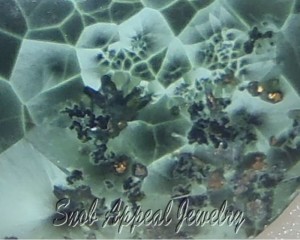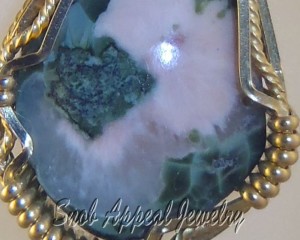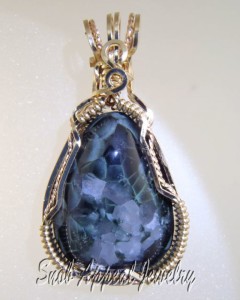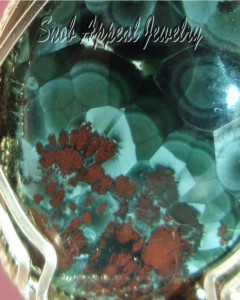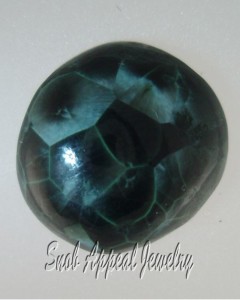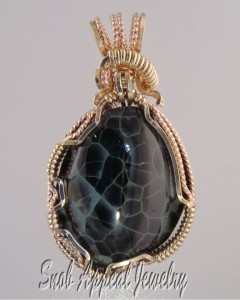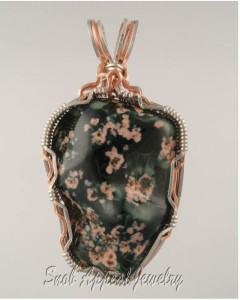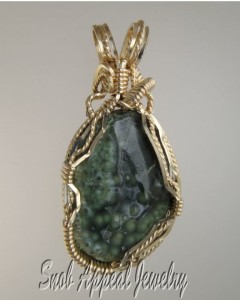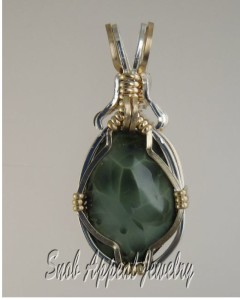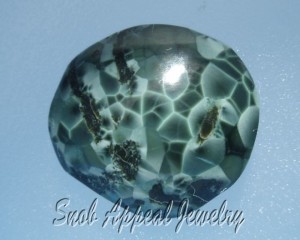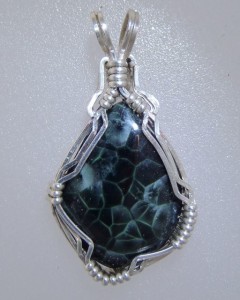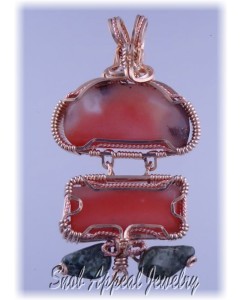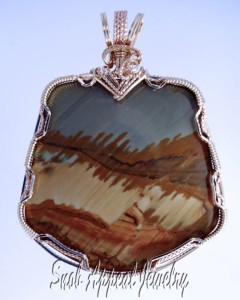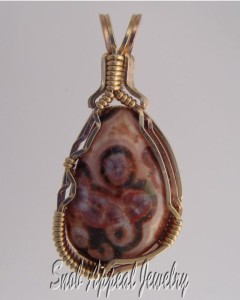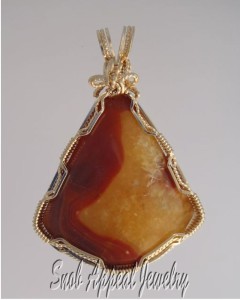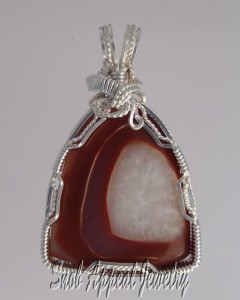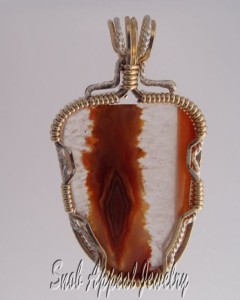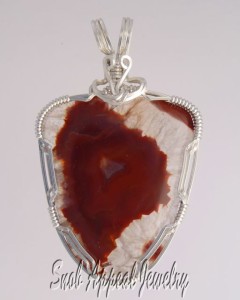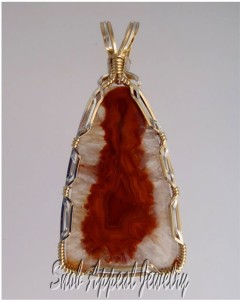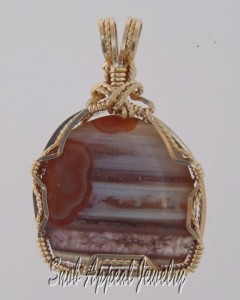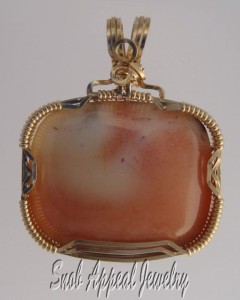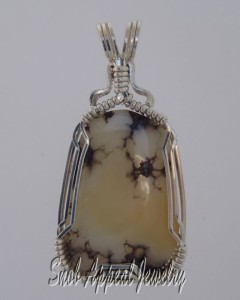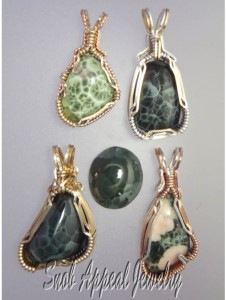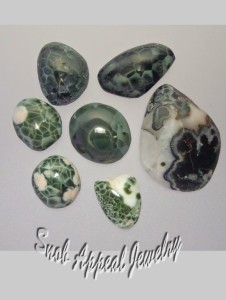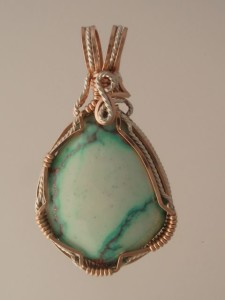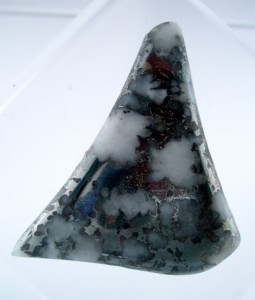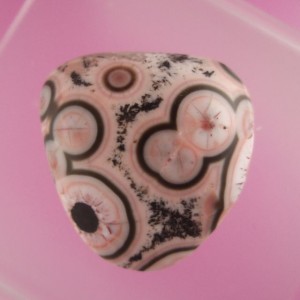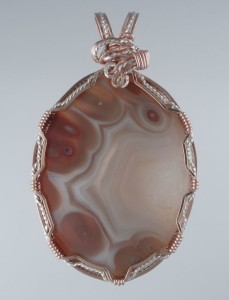We offer a wide selection of gemstone jewelry from Great Lakes stones, but a favorite gem of ours may be one you have never heard of. We are pleased to offer a great selection of Datolite Pendants, because it is so unique, colorful, coppery, and generally surprising. Datolite is not one of those “pretty sounding” jewelry names like Larimar or Sleeping Beauty Turquoise, but it is indeed very beautiful and exceedingly rare, particularly in bright, pastel colors that some of the mines were famous for. Datolite is a Michigan gemstone that should be better known.
The old Copper Mines of Michigan’s historic Copper Country have produced colorful Datolite of which there is no comparison. We are fortunate to have hunted Datolite, and bought old collections over the last 30 years, always looking for great colors. Finding coveted, colorful Datolite today is rare because of several factors.
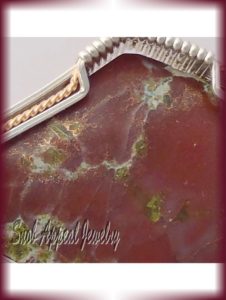
Closeup showing massive copper content. This Datolite virtually shines in the sun from the copper content.
HUNTING DATOLITE TODAY
Over the past 5 years many of the old copper spoil piles have sadly been crushed and used as road fill, both under paved roads and to stabilize forest roads for logging operations. Most of the few old mine dump piles left are privately owed and unfortunately, but understandably, in this lawsuit-happy world, the owners are hesitant to permit rock picking on their piles. Unstable rock piles can be quite hazardous and we hear of injuries every year caused by many factors. Frivolous lawsuits can totally dissuade what used to be rockhound-friendly mine owners from allowing anyone on their piles.
I have always felt that if I am collecting rocks it’s my owe damn fault if I injure myself. i always have my mind trained to automatically think “If i do this, then this might happen”, especially while climbing around on, or moving rocks. Money hungry specimen miners have even tunneled into rock spoil piles in the winter for valuable, colorful Datolite in years past.
MINERAL INFORMATION
Like most of the minerals and metals in the Keweenaw Copper Country, Datolite was formed in the amygdaloidal basalt through hydrothermal precipitation. It is associated with prehnite, epidote, native copper, calcite and a variety of zeolites. You could also say it is associated with chlorastrolite as it may be included in the greenstone, as can zeolites.
The Mohs hardness of Datolite is stated to be 5.5, but from my cutting experience, the hardness can vary even within a nodule or Datolite piece. Other minerals mixed in with Datolite can also be of different hardnesses, which makes cutting and polishing a copper-included Datolite quite challenging. A Datolite from the Keweenaw Peninsula can either form in seams or as nodules with a texture of cauliflower, with no hint of what is within. The most Datolites are white and have been found in all the Datolite collecting areas. Savvy Datolite hunters look for Nodules that have a light colored, cauliflower-looking skin and often porcelain-looking shards of white on the piles. Often what is found may indeed be some old dinnerware, but other times it is Datolite. Datolite is a Calciumborosilicate and it’s not unusual that it may resemble glass or porcelain. Some high temperature, high strength glass, such as Pyrex, is a BoroSillicate. One of the most glass-like, solid Datolite, from my experience, was found at the Isle Royale Mine #7 near the now Walmart location in Houghton. The Datolite from the Isle Royale Mine #7 has been made into very stable beads in the past, harder and higher in Silica than most other area mines. It is normally a translucent very pale white-green, but very nice blue Datolite has been found at the Isle Royale.
DATOLITE COLORS
Experienced Datolite hunters are able to make educated guesses as to what mine a Datolite came from, based on color and crust. Keweenaw Datolite has long been treasured for jewelry and offers a broad spectrum of the rainbow. The Canary yellow from Keweenaw Point, the blue/greens from Centennial, and apple reds from various mines, and bright orange/yellows from the Quincy/Franklin/Mesnard mines are some of the most coveted. A great source of pictures to identify Datolite colors from different mines is Jeff Anderson’s Dwarves Treasures page. His favorite mineral is Datolite and he has sample Datolites from many locations.
My metaphysical friends tell me that Datolite can sharpen all mental abilities. I’m afraid that even though I have worked with Datolite for many years I still forget things. I tell people I’m in my “Wonder Years”; just today I wondered what day it was, where my TV tuner was, where my car was parked, and where Bonnie (wife) went to.
Even though I’ve owed this spectacular 38 Gram piece of luscious canary yellow Keweenaw Point Datolite for some time, you’ve never seen it. I have not decided what I’m going to do with it yet. High Grade Yellow Point Datolite is the most rare of Keweenaw Datolites, therefore the most valuable Datolite there is. I did not enhance this Datolite; This is exactly what it looks like.
The prices of Datolite Jewelry can vary widely based on scarcity, color, size, and quality. Remember that because of the vanishing mine dump piles, Datolite hunting is now very limited. Many prime locations of the past are long gone, buried, flooded, or ground up. These factors combine to make Datolite jewelry pieces great heirloom treasures which can be passed down through your family with their story. Many times someone will be seeking a Datolite from a certain mine because a relative had worked there many years ago. Quincy or Delaware Datolites are popular because people want to remember their tour of those mines.
Datolite pendants are very popular at Copper World, our retail outlet in Calumet. You may be able to purchase a rough Datolite there also.
Really good Datolite (jewelry) is a great investment, and like Western Turquoise, many the sources are no longer available. Any jewelry from Michigan’s Copper District is a good investment with a historic backstory, but for color and variety you can’t beat Datolite Jewelry.


